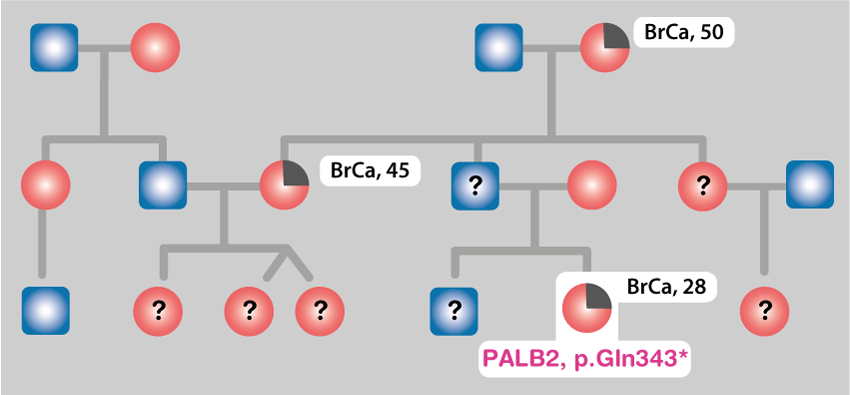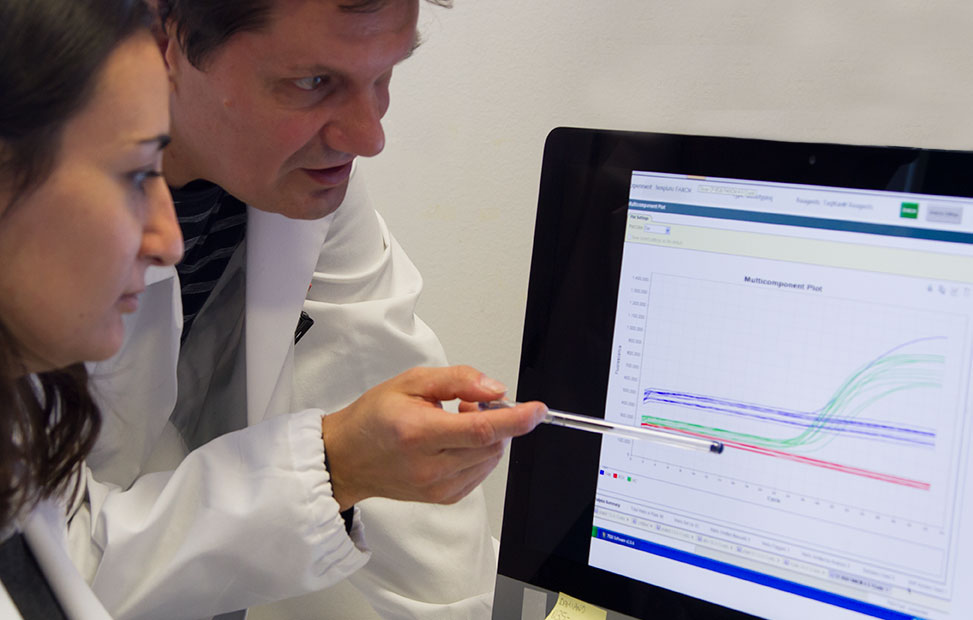Genome Diagnostics

Background and current state-of-the-art
The advent of massive parallel DNA sequencing has revolutionized the biomedical research field ensuring rapid and affordable deciphering of the human genome sequence. This has led to a dramatic acceleration in the identification of genetic alterations responsible for several congenital and acquired diseases. In particular, taking advantage of next generation sequencing (NGS) technology, both national and international large-scale genome sequencing projects have made substantial progress in the reconstruction of the spectrum of recurrent genetic alterations present in sporadic and inherited forms of cancer.

Stefano Casola
Stefano Casola is head of the Genome Diagnostic Program. He is also Principal Investigator of the Genetics of B Cells and Lymphomas program.
See profile
Recent publications
- EBI2 is a negative modulator of brown adipose tissue energy expenditure in mice and human brown adipocytes.
Copperi F, Schleis I, Roumain M, Muccioli GG, Casola S, Klingenspor M, Pfeifer A, Gnad T.
Commun Biol. 2022 Mar 29;5(1):280. doi: 10.1038/s42003-022-03201-6. PMID: 35351968. - Risks of breast and ovarian cancer for women harboring pathogenic missense variants in BRCA1 and BRCA2 compared with those harboring protein truncating variants.
Li H, Engel C, de la Hoya M, Peterlongo P, Yannoukakos D, Livraghi L, Radice P, et al.
Genet Med. 2022 Jan;24(1):119-129. - Protein truncating variants in FANCM and risk for ER-negative/triple negative breast cancer.
Peterlongo P, Figlioli G, Deans AJ, Couch FJ.
NPJ Breast Cancer. 2021 Sep 28;7(1):130.
Photogallery
 Genome-Diagnostics 01
Genome-Diagnostics 01 Genome-Diagnostics 03
Genome-Diagnostics 03Fig.1 The picture represents a family. Circles indicate female; squares, males; union horizontal lines, the two parents; vertical lines, their children. The highlighted woman (the proband) developed breast cancer at age 28. As her paternal ant and grandmother were also affected with the disease, the proband underwent genetic counseling to consider testing for mutations in breast cancer predisposition genes. The sequencing of BRCA1, BRCA2 e PALB2 genes on DNA prepared from blood showed the pathogenic mutation PALB2 p.Gln343*. This finding will allow a quick and inexpensive test to know if other family members have inherited the mutation and are at risk of developing breast cancer.

